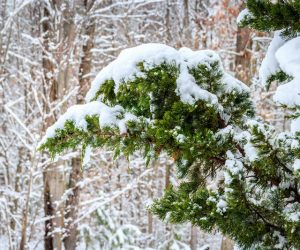
[dt_quote type=“pullquote“ layout=“justify“ font_size=“big“ animation=“none“ size=“1″] Most of us expect the snow to be impatient, but when the time comes to clean the yard, the enthusiasm evaporates. Snow is good for the garden because it is a good insulator from the cold and supplies the plants with the much needed water during the drier winter months. But if you do not pay attention to the more fragile plants or if you have not dug the garden properly, risk it and cause serious damage. For example, using salt for icy tiles can cause damage to nearby plants. Another problem is the risk of the fragile and gentle branches of evergreen shrubs and the trees breaking into more heavy snowfalls. In this article, you will find useful tips on how to better handle snow removal and how to avoid unwanted damage to plants.
[/dt_quote]
[ultimate_spacer height=“10″]
5 tips for snow cleaning
[/dt_quote]
1. Do not delay working with the shovel
In order not to freeze, do not delay the cleaning of the snow with the shovel for the next day. Make sure you use a quality shovel to avoid stressing the body, especially on your back. And a little cunning: apply cooking oil on your shovel. It may sound strange but prevents the snow from sticking and makes it easier to move.

2. Watch out for salt
Salt can seriously damage plants, lawns and soil. His alternative is sand. If you scatter salt on the driveway or path, however, carefully avoid the garden and the green areas. Apply salt on the icy surfaces only after you have cleaned the snow cover, so you will reduce the amount you need.
Some plants are more durable and will not suffer from salt, such as:
- peony
- yarrow
- sedum
- gerber
- yukka
3. Clean the snow from the trees and bushes
To remove the snow from the bushes and plants, you need to be careful. Only act with a broom or hands. By gently shaking the branches you can also remove the accumulated overflow, but keep in mind that they are more fragile during the winter months. If you have ice and frost, do not try to remove it with salts and detergents, these chemicals pose a risk of harm to plants. For broken branches, wait until the end of winter to cut them.

4. Snow on the lawn
The grass beneath the snow cover is fragile and sensitive. Avoid stepping on it to keep grass from an injury. So the snow will remain intact and melt faster.
5. Protect plants in the winter
Before the next snowfall, use a plant network to knit the branches of coniferous trees and shrubs in conical shape to protect them from deformation and fracture. Lower bushes and grasses can be covered with fir branches, and the stems of the younger and more sensual wrap with polyethylene.
[dt_fancy_title title=“Why hire a professional for snow cleaning?“ title_size=“h2″][dt_vc_list]
- More efficient cleaning
Professionals have a trained team, the right tools, machines and chemicals, as well as years of experience in cleaning various winter conditions. This is what guarantees a quick and easy snowflake. - Better equipment
Unlike the ordinary shovel you will use, professional companies have equipment and chemicals that will remove snow and ice without causing damage to plants and green areas. If you turn to professionals, you will save on investing in tools and preparations. - No harm in the garden
Another great advantage of hiring a professional snow removal company from your property is that the whole process is done carefully without causing damage to the property.
[/dt_vc_list]
[contact-form-7 id=“1812″]







